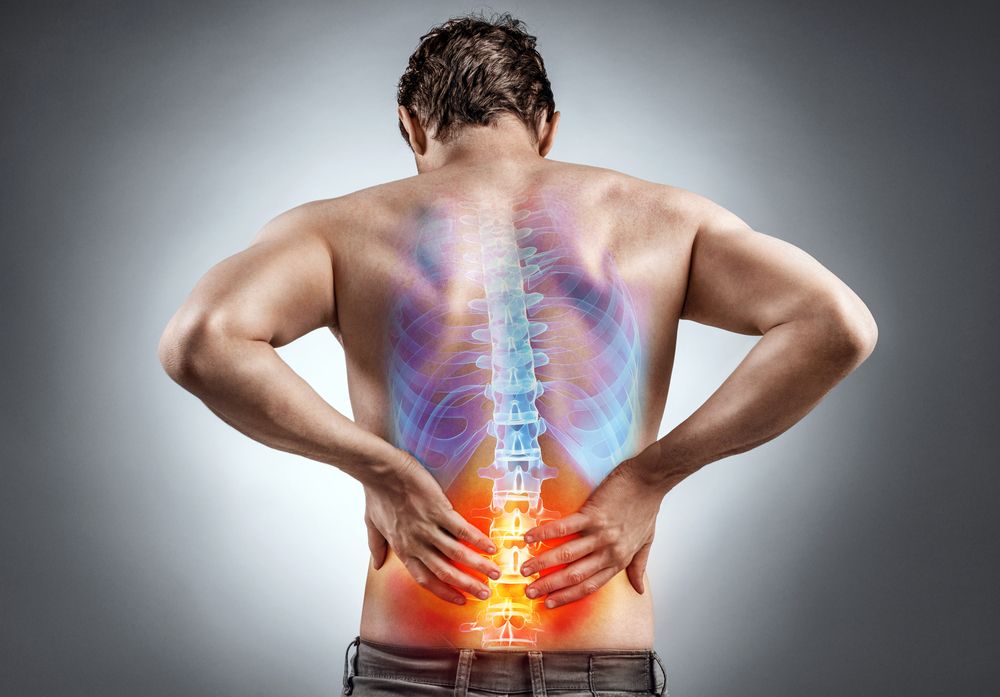Back pain can be debilitating. Lumbago or lower back pain is fairly common in the United States. (Learn More – Lower Back Pain)
There can be a variety of symptoms associated with back pain, (Learn More – Symptoms) and it has many different causes. (Learn More – What Causes Back Pain?)
Back pain can either be acute or chronic. (Learn More – Acute or Chronic Back Pain)
If you need to find a doctor to treat your back pain, first consult with your family physician or primary care provider. (Learn More – Finding a Doctor for Back Pain)
Depending on your situation and the cause of your back pain, you may use a primary care provider to treat your back pain, (Learn More – Primary Care Providers) a specialist, (Learn More – Specialists) or a therapist. (Learn More – Therapists)
Other techniques like massage, yoga, and acupuncture may be helpful. In most cases, these should not be the primary methods used to address back pain. (Learn More – Complementary and Alternative Techniques)
Back Pain
Back pain is relatively common. The American Association of Neurological Surgeons reports that 75% to 85% of Americans will experience back pain at some point in their lives. Half of those people will have more than one episode of back pain a year.
Lumbago, or low back pain, is typically a symptom of another problem, disorder, or disease.
Most often, lower back pain is part of an issue related to your muscles, nerves, ligaments, or spinal cord. Lower back pain can also be the result of a problem with the organs situated around the lower back, such as the kidneys.
In 90% of lumbago cases, surgery is not needed. Pain can be alleviated via other means.
Symptoms
Back pain can be variable in its symptomatology, such that you may experience a dull aching sensation, a shooting or stabbing pain that may radiate down your leg, a decrease in your range of motion, or the inability to stand up straight without experiencing pain. When back pain is due to strain or overexertion, it is typically short-lived, but it may last for weeks in some cases.
Symptoms of back pain that may suggest a more serious issue include:
- Numbness or tingling in one or both of your legs
- Constant and intense pain that worsens significantly during the night
- Back pain that occurs with a loss of bladder or bowel control
- Back pain associated with a throbbing pain in your abdomen area
- Back pain associated with unexplained weight loss
- Fever
If you have back pain and any of the above symptoms, you should immediately consult with your physician.
What Causes Back Pain?
The most common causes of back pain include:
- Overexertion or strain
- Structural issues in the vertebrae (the interlocking bones of the spinal column) or discs (the areas of tissue in the space between each vertebrae). Common causes of back pain include herniated discs, bulging discs, or sciatica.
- Arthritis
- Osteoporosis or thinning of the bones (a loss of bone density). This can result in fractures in the vertebrae, which can be painful.
- Compression of the sciatic nerve (known as sciatica). This can result in debilitating back pain that runs down one or both legs.
- A number of other rare conditions, such as spondylolisthesis (displacement of the vertebrae), cauda equina syndrome (a loss of nerve functioning at the lower part of the spinal cord), infections of the spine or organs like the kidneys, or cancer.
Acute or Chronic Back Pain
Acute back pain will typically develop very quickly, whereas chronic back pain is back pain that has been present for three months or longer. Acute back pain often occurs as a result of overexertion or strain, whereas chronic back pain is typically a sign of a more serious injury or condition.
 Depending on the nature of your symptoms, their intensity, and how the symptoms are affecting your ability to function, you may need to see a doctor.
Depending on the nature of your symptoms, their intensity, and how the symptoms are affecting your ability to function, you may need to see a doctor.
Finding a Doctor for Back Pain
If you experience back pain for longer than two weeks or you experience back pain along with some of the symptoms listed above, you may have a more serious condition beyond strain or overexertion. You should discuss the situation with your primary care physician. By understanding your symptoms, knowing the length of time you have had the symptoms, and performing a physical examination, your physician can determine what type of specialist may be best for you, if one is needed at all. Generally, your primary care physician will help you find a specialized doctor for back pain, if needed.Three groups of health providers treat back pain.
- Primary care providers include family physicians or family practice doctors, chiropractors, and doctors of osteopathic medicine
- Specialists have areas of expertise with certain conditions, including surgeons, neurologists, and rheumatologists
- Therapists, including occupational therapists, physical therapists, and clinical psychologists, offer expertise in nonmedical interventions
Primary Care Providers
Primary care providers include many different types of doctors, such as family practice doctors, internists, and obstetricians/gynecologists. These physicians commonly see and treat various forms of back pain. They often have extensive experience with assessing issues and choosing the appropriate intervention, including whether you should see a specialist or therapist.
Primary care physicians do not generally perform surgery. They can diagnose problems, prescribe medications, and make referrals to specialists.
 Chiropractors diagnose and treat clients whose issues are associated with neck and back pain. They may use a variety of muscular and spinal manipulation procedures that resemble different types of massage to address your needs. Chiropractors are typically not able to prescribe medications.
Chiropractors diagnose and treat clients whose issues are associated with neck and back pain. They may use a variety of muscular and spinal manipulation procedures that resemble different types of massage to address your needs. Chiropractors are typically not able to prescribe medications.
Specialists
In this context, specialists are doctors who focus on a particular domain associated with the practice of medicine. Surgeons are medical doctors who specialize in performing surgery. Neurologists are medical doctors who specialize in diseases and disorders of the brain and spinal cord. Rheumatologists specialize in treating different forms of degenerative or arthritic conditions.
You will most likely need a referral from a primary care physician in order to be evaluated by a specialist. These professionals can help determine the cause of your back pain and the appropriate treatment. The intervention may be surgery, medication, or another treatment as determined by the specialist.
Therapists
Physical therapists, occupational therapists, and clinical psychologists may provide interventions that facilitate medical treatments for your back pain, or provide nonmedical treatment for some type of back problem that is not being addressed through medical means.
Therapists can add an important functional component to the overall treatment for back pain. They can help you compensate for areas of weakness, learn new strategies, and manage chronic pain through the use of relaxation and other techniques.
The Use of Complementary and Alternative Techniques
Complementary and alternative treatments are designed to enhance the effects of the primary interventions performed by primary care physicians and specialists. Some sources list therapists as a type of complementary or alternative intervention for back pain.
Other complementary and alternative techniques that might be useful in addressing back pain include massage, yoga, and acupuncture. The research evidence for the use of these techniques is mixed, but some people benefit from them.
Discuss the use of these techniques with your primary care provider before engaging in them. They should not be the primary approach to addressing your back pain.
The first step in treating back pain is always to consult with your primary care provider and follow their recommendations. If you want to add a complementary or alternative intervention, discuss your options with your primary care physician.
References
Low Back Pain. (2019). American Association of Neurological Surgeons.
Back Pain: Symptoms and Causes. (April 2018). Mayo Clinic.
Low Back Pain: Mechanism, Diagnosis and Treatment. (2012). Lippincott Williams & Wilkins.
Low Back Pain Fact Sheet. (August 2019). National Institute of Neurological Disorders and Stroke.
Managing Low Back Pain in the Primary Care Setting: The Know – Do Gap. (November 2010). Pain Research and Management.
Eight Specialists Who Treat Pain. (January 2018). WebMD.
Complementary and Alternative Therapies for Back Pain II. (October 2010). Evidence Report/Technology Assessment.


